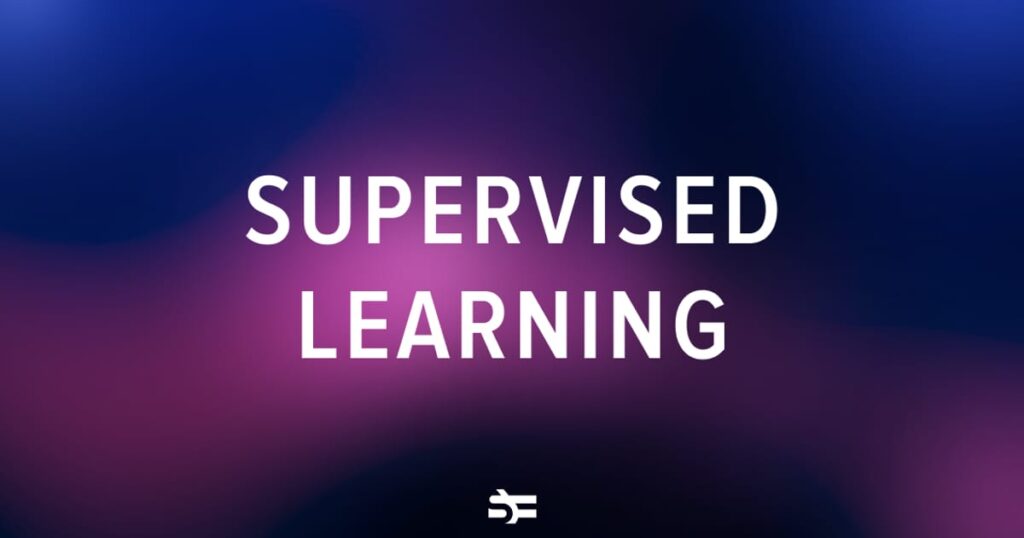In the field of machine learning, there are various methods for creating effective learning representations. One of the earliest and still widely used approaches is supervised learning, where a teacher guides the algorithm to learn patterns from data by providing input-output pairs.
This article will delve into the concept of supervised learning, how models are constructed, and their practical applications.
The Definition of Supervised Learning
Supervised learning is a machine learning technique that relies on a teacher to learn patterns from data. The teacher provides the algorithm with input-output pairs, where the input is the data and the output is the corresponding label or target. The algorithm learns to associate new data with the provided labels under the supervision of a programmer.
For instance, an algorithm may be trained with images of apples labeled as “apple.” When shown a new image of an apple, the algorithm should correctly identify it.
In real-world tasks like fruit classification, the computer can identify apples and categorize them accordingly.
Key Components of Supervised Learning
Supervised learning relies on training data, model architecture, loss function, and optimization algorithm. These components work together to enable algorithms to learn from data and make accurate predictions.
1. Training Data
The training data consists of input features and corresponding output labels that guide the algorithm. The quality, size, and diversity of the training data are crucial for successful learning. For example, training an algorithm to differentiate between cats and dogs requires varied images of both species.
2. Model
The model represents the relationship between input features and output labels. It adjusts its parameters during training to minimize the difference between predictions and actual labels.
3. Loss Function
The loss function quantifies the error between predicted and actual outputs, guiding the optimization process.
4. Optimization
Optimization involves fine-tuning model parameters, hyperparameters, cross-validation, feature engineering, and ensemble methods to enhance performance.
How Does Supervised Learning Work?
Supervised learning begins with training data, where input features are matched with output labels. The algorithm utilizes a model to map input features to output labels, refining its understanding through iterative training cycles.
After training, the model is evaluated on a separate test set to assess its generalization to new data. A well-performing model provides accurate predictions on the test set.
Once trained and evaluated, the supervised learning model is ready for deployment in real-world scenarios.
Types of Supervised Learning
Supervised learning can be classified into two main types: classification and regression, depending on the nature of the output variable.
1. Classification
Classification predicts discrete class labels for new data points.
2. Regression
Regression predicts continuous numerical values.
Supervised Machine Learning Algorithms
Common algorithms for classification tasks include logistic regression, decision trees, support vector machines, K-nearest neighbors, random forest, and neural networks.
For regression tasks, algorithms like linear regression, ridge regression, Lasso regression, decision trees, support vector machines, and neural networks are commonly used.
Real-Life Applications of Supervised Learning
Various algorithms have practical applications in different domains:
1. Logistic Regression: Predicting Customer Churn
Logistic regression can be used to predict customer churn in telecom companies based on usage patterns, customer interactions, and contract details.
2. Decision Trees: Loan Approval
Decision trees can automate loan approval processes based on financial history, credit score, and income.
3. Support Vector Machines (SVM): Email Spam Classification
SVMs can classify emails as spam or non-spam, enhancing email filtering.
4. K-Nearest Neighbors (KNN): Handwriting Recognition
KNN can recognize handwritten digits by comparing them to training examples.
5. Random Forest: Predicting Disease Outcomes
Random forests can predict disease outcomes based on patient data, improving accuracy.
6. Neural Networks: Image Recognition in Autonomous Vehicles
Neural networks aid in image recognition for autonomous vehicles, ensuring safe navigation.
7. Linear Regression: Predicting House Prices
Linear regression can predict house prices based on various features like square footage and location.
8. Ridge Regression: Predicting Stock Prices
Ridge regression can predict stock prices using financial indicators while preventing overfitting.
9. Lasso Regression: Marketing Campaign Optimization
Lasso regression can predict optimal advertising budgets by identifying influential factors in campaign success.
10. Decision Trees (for Regression): Predicting Energy Consumption
Decision trees can predict daily energy consumption based on various factors like temperature and holidays.
11. Support Vector Machines (for Regression): Predicting Sales Revenue
SVMs can predict monthly sales revenue based on marketing spending and economic indicators.
12. Neural Networks (for Regression): Weather Forecasting
Neural networks can forecast temperatures based on historical weather data and atmospheric conditions.
Conclusion
Supervised learning is a potent tool in creating intelligent applications across various domains. Understanding and leveraging this technique will be essential for software development companies aiming to stay innovative in a rapidly advancing technological landscape.
For further information, refer to additional resources.


